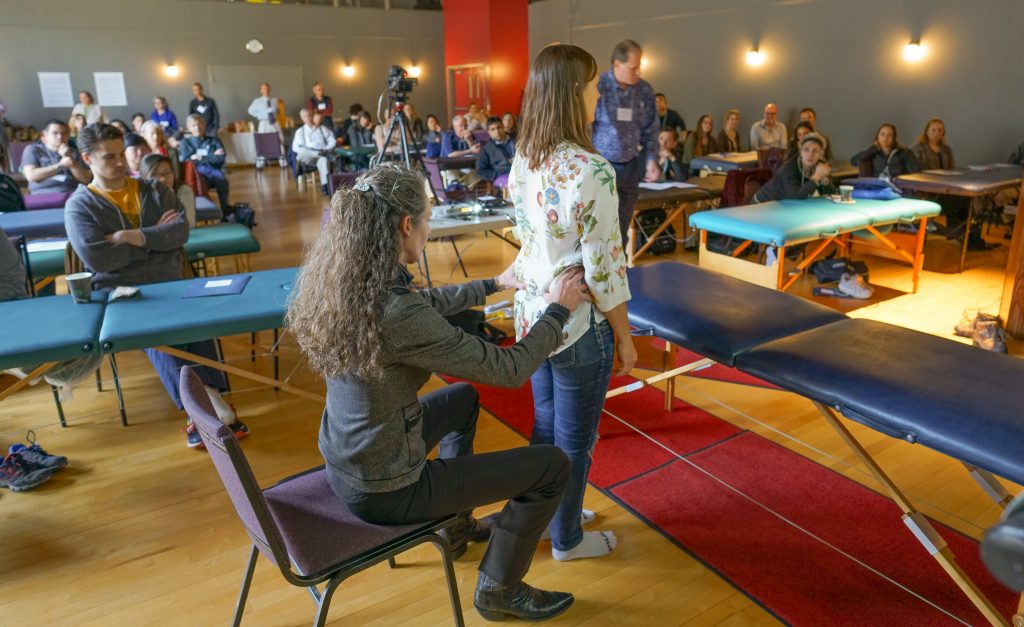more about Osteopathy…

Osteopathic Medicine was founded on the principle that a person is one whole functional unit – body, mind, and spirit. Structure (anatomy) and function (physiology) are seen as united and inseparable, and the power and the wisdom for healing come from within the patient.
Dysfunction, as defined in osteopathic medicine as restricted movement within the normal range of motion, in any one part of the body will produce a pattern of compensation in all other parts. In other words if one part isn’t moving properly most other parts will have to alter their normal movement to accommodate for this change. In order to address a primary dysfunction anywhere in the body, the physician must address all the compensatory mechanisms of the dysfunction in order to restore normal function to the whole. For example, a cranial strain pattern is influenced by fascial connections through the longitudinal spinal ligaments and related fascias including the thoracic and pelvic diaphragms. To ensure freedom of movement of the longitudinal ligaments and related structures, osteopathic treatment of the cervical, thoracic and lumbar regions, as well as the sacrum and pelvis is required.
Somatic dysfunction is often the result of visceral dysfunction through viscerosomatic reflexes. Therefore, it is important to address the cranial base, cervical, thoracic, lumbar and sacral regions in order to address the autonomic influence of organ dysfunctions on somatic dysfunction.
With a primary complaint of the musculoskeletal system or a systemic condition, the physician is to consider the region of the complaint, as well as compensatory mechanisms in any other region in order to restore normal function to the whole. For instance, to ensure a normal range of motion in the thoracic spine, or shoulder, addressing restrictions of ribs is also necessary. Restoring normal motion to the ribs may require restoring normal motion to the thoracic and pelvic diaphragms as well as the temporal bones in the cranium.
With a primary complaint in the upper extremity, the cranial, cervical, thoracic, lumbar, sacral and pelvic regions must be addressed, due to anatomical connections and compensatory patterns that set up in these regions. For example, the cervical and upper thoracic nerves passing through fascial layers of the thoracic inlet and neck extend through the shoulder into the upper extremity. Treatment of the interosseous membrane between the Radius and Ulna of the upper extremity and the various fascial compartments, as well as the ligamentous articular mechanism of the hand, wrist, elbow and shoulder, help improve range of motion of the cervical spine. In other words fascias as well as ligamentous articular structures of the hand, wrist, forearm, elbow, arm, shoulder and neck work as a functional unit in relation to the whole.
With a primary complaint in the lower extremity, we must consider the direct relationship between the pelvic diaphragm, the fascias of the leg, interosseous membrane between the Tibia and Fibula and the plantar fascias, through the ligamentous articular mechanisms of the hip, knee, ankle and foot. In this way, the plantar fascias of the feet are connected through the lower extremity to the pelvis, pelvic diaphragm, thoracic diaphragms and the cranial membranes.
“The osteopath reasons, if he reasons at all, that order and health are inseparable
and when order in all parts is found disease cannot prevail
and if order is complete and disease should be found there is no use for order.
And if order and health are universally one in union
then the doctor cannot physiologically or philosophically
be guided by any scale of reason otherwise.”
A. T. Still